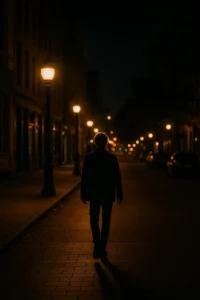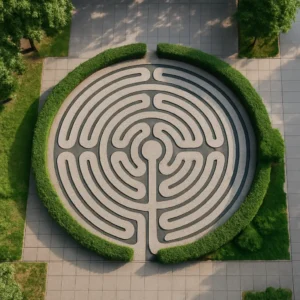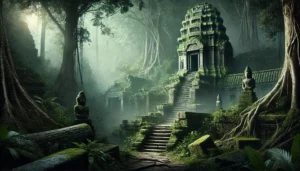São Paulo, Brazil’s largest city, is known for its skyscrapers, bustling streets, and diverse culture. But beneath the surface of this massive metropolis lies a quieter, more mysterious side—hidden spots, forgotten corners, and urban legends that few residents and even fewer tourists know about. From haunted buildings to secret tunnels, São Paulo holds countless secrets waiting to be uncovered by the curious and the brave.
1. The Martinelli Building’s Abandoned Floors
The Martinelli Building, São Paulo’s first skyscraper, was once a symbol of luxury and modernity. But during its long history, some upper floors fell into disuse and gained a reputation for being haunted. Whispered stories speak of ghost sightings, strange noises, and unexplained shadows. Though parts of the building are open for tours, there are floors not accessible to the public—fueling its mystery.
2. The Underground Tunnels of República and Sé
Beneath downtown São Paulo, a network of old tunnels runs between major squares and buildings. Some say they were built during World War II as escape routes or bomb shelters. Others believe they were part of an old tram system or secret military operations. While a few sections are occasionally explored by urban adventurers, much of the tunnel system remains sealed and undocumented.
3. The Paranapiacaba Village
Just outside São Paulo, the fog-covered village of Paranapiacaba is like stepping into another time. Originally built to house British railway workers, the village is filled with wooden houses, iron structures, and ghost stories. Paranapiacaba is known for its persistent fog and eerie atmosphere. Locals tell tales of apparitions on the old train tracks and spirits wandering near the clock tower.
4. The Crypt of the Sé Cathedral
Most visitors to São Paulo’s iconic Sé Cathedral admire its gothic architecture—but few venture below. In the crypt, hidden beneath the altar, lie the tombs of bishops and historical figures. The dim lighting, stone corridors, and silence create an atmosphere that’s both sacred and mysterious. Some visitors report feeling a sudden chill or unexplained presence in the air.
5. The Casa das Rosas Basement
Casa das Rosas is a well-known cultural space and poetry center located on Avenida Paulista. However, beneath this peaceful mansion lies a lesser-known basement that once served as a shelter during political unrest. Rumors suggest that it was used for secret meetings and even hiding persecuted individuals. While the main building is open to the public, the basement remains off-limits—adding to its legend.
6. The Abandoned Hospital Matarazzo
In the heart of the city sits the former Hospital Umberto I, also known as Hospital Matarazzo. Closed in the early 2000s, this once-busy medical center now stands abandoned, its empty halls filled with echoes of the past. Urban explorers who’ve entered describe rusted equipment, forgotten documents, and a heavy sense of energy still lingering. It has since been partially restored for cultural events, but much of its haunted legacy remains.
7. The Secret Garden in Bixiga
Bixiga is a historic and vibrant neighborhood, known for Italian culture and traditional bakeries. But hidden among its winding streets is a tiny, almost invisible garden surrounded by old walls and overgrown plants. Some say it was once a meeting place for revolutionary groups; others think it’s just an abandoned courtyard. Whatever the truth, it remains a calm, silent patch in the heart of the noise.
8. Mirante 9 de Julho’s Past Life
Today, Mirante 9 de Julho is a cultural hotspot with cafes and art events, but in the past, it was an abandoned overlook hidden behind Avenida Paulista. For years, it was forgotten, taken over by graffiti and the occasional squatter. Only in the last decade was it restored. But stories persist about what happened there before—some claim it was used for secret photography, others whisper about surveillance and hidden tunnels.
9. The João Mendes Courthouse Legend
The João Mendes Forum is one of the busiest courthouses in the country—but legends say it was built on top of an old cemetery. Employees have reported hearing footsteps in empty halls and seeing doors open on their own. Even skeptical workers admit there’s something strange about the place at night.
10. The São Paulo Library’s Restricted Floors
In the heart of São Paulo sits the imposing Mario de Andrade Library. While its main reading rooms are open to all, certain archives and levels remain restricted. Whispers tell of ancient documents, banned books, and even secret experiments once funded by authoritarian governments. Whether true or not, the mystery draws curious minds from around the world.
Conclusion: Secrets Hidden in the Urban Maze
São Paulo is not just a city of lights and noise—it’s a living maze of history, secrets, and silent stories. For every landmark, there’s a shadow; for every well-known street, there’s a hidden door waiting to be discovered. Exploring these mysterious locations gives us a deeper understanding of the city’s layers—past and present, visible and hidden.






